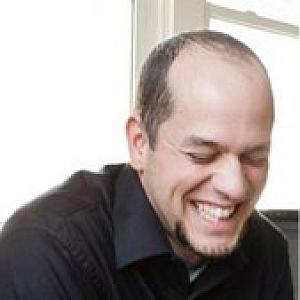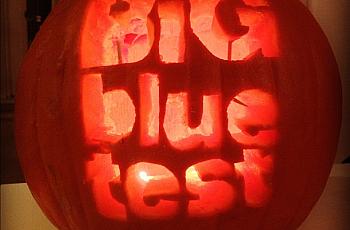
Manny Hernandez
President

President
Manny Hernandez is a nonprofit executive, social media consultant and diabetes advocate committed to connecting people touched by diabetes and raising diabetes awareness. He is the president of the Diabetes Hands Foundation (DHF), a nonprofit that runs two social networks for people touched by diabetes: TuDiabetes.org (in English, started in March 2007) and EsTuDiabetes.org (in Spanish, started in August 2007). He has had LADA (a form of type 1 diabetes) since 2002 and has used an insulin pump since 2005. He has been a columnist for dLife.com since 2007.
In early 2008, Mr. Hernandez worked briefly for Ning, an online social networking company in Palo Alto. From 2000 to 2008, he worked in web product management, online community management, content management and search engine marketing in a number of companies, including Full Sail University, Quepasa.com, Earth911 and Pets911, and from 1996 to 2000, he worked for Procter & Gamble in Venezuela.
Mr. Hernandez earned a bachelor’s degree in electrical engineering from Universidad Metropolitana in Venezuela and a master’s degree in electrical engineering from Cornell University. While attending Cornell, the Web bug bit him, and it hasn’t abandoned him since. He wrote "Ning for Dummies," which was published in April 2009 and collaborated on "Twitter For Marketing for Dummies," due to be published in the Fall of 2009. He is a recognized key opinion leader and speaker about diabetes and social media applied to nonprofits and Health 2.0.
You can find him on Twitter (@askmanny) and read his personal blog at www.askmanny.com.

The Big Blue Test diabetes awareness campaign wins recognition for using the Web creatively to make a difference in healthcare, just as World Diabetes Day approaches.
<p>”We want to help get it right,” states diabetes advocacy group</p>
<p>How the way the US, Canada and the EU are acting towards the upcoming UN NCD Summit in September reminds me of "Horton Hears a Who!" by Dr. Seuss... and what we can do to change it.</p>
<p>Diabetes Hands Foundation won 2 Telly Awards! The <a href="http://www.youtube.com/watch?v=nkLHgK94Z0E" target="_blank">Big Blue Test video</a> that went viral surrounding the <a href="http://bigbluetest.org" target="_blank">Big Blue Test</a> diabetes awareness campaign last November took the honors. The Big Blue Test video won 1 silver (the highest honor) and 1 bronze award.</p>
<p>What is Storify? Good question! It's a new web product that <a href="http://blog.storify.com/2011/04/storify-launches-public-beta/" target="_blank">announced its public beta</a> this week, meant to help build stories conveniently pulling from social media sources such as Twitter, YouTube, etc.</p><p><a href="http://storify.com/askmanny/the-big-blue-test-a-small-example-of-the-bi…; target="_blank">Below is an example of a story I just created</a> to give you a feel for what's possible. Seems like a very convenient way to aggregate sources from social media. What do you think?</p>
<p>As you may have learned about through DiabetesMine today, the Diabetes Hands Foundation (the nonprofit responsible for TuDiabetes, EsTuDiabetes and diabetes awareness programs such as Big Blue Test, No-Sugar Added Poetry and Word In Your Hand) has received a capacity building grant from The Leona M. and Harry B. Helmsley Charitable Trust. We wanted to share this great news with the RoH community!</p>
<p>We at the Diabetes Hands Foundation developed <a href="http://healthseekergame.org" target="_blank" title="HealthSeeker, a healthy Facebook game">HealthSeeker</a>, a new healthy Facebook game (we think this is not an oxymoron!) in collaboration with Joslin Diabetes Center, with the goal of hel
<p>(cross-posted and edited from the<a href="http://www.diabetesmine.com/2010/05/introducing-“tuanalyze”-why-mapping-diabetes-data-matters.html" target="_blank"> original version posted in DiabetesMine</a>)</p>
<p>As I prepare to participate in the Advisory Board meeting for Reporting On Health, I realize it has been a while since I last posted in here. I thought I'd share a recent presentation I did at the UC Berkeley School of Public Health, along with two other professionals in the field, focused on social networking tools for health: <a href="http://www.slideshare.net/askmanny/social-networking-tools-for-health&q…; title="Social networking tools for Health">Social networking tools for Health</a></p>
<p>It’s been five years since I started navigating the waters of social
media. I was trying to get a feel for what others were seeing in
MySpace, so I joined it and I soon joined Facebook too. Flickr,
YouTube, LinkedIn, Twitter and other sites were part of the plethora of
social media destinations I visited periodically. They all had one
thing in common: they allowed me to socialize and share with others
online.<br />